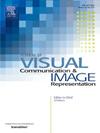STAD-ConvBi-LSTM:基于时空注意的深度卷积Bi-LSTM异常活动识别框架
IF 2.6
4区 计算机科学
Q2 COMPUTER SCIENCE, INFORMATION SYSTEMS
Journal of Visual Communication and Image Representation
Pub Date : 2025-04-28
DOI:10.1016/j.jvcir.2025.104465
引用次数: 0
摘要
人体活动识别已成为计算机视觉领域的重要研究方向。实时系统对行为进行分析,对异常活动进行无休止的监控和识别,从而启发现实世界中的公共安全与监控措施。然而,由于各种各样的操作、复杂的模式、波动的视点或背景混乱,实现这些框架是一项具有挑战性的任务。对视频异常的识别仍然需要对准确的预测和计算效率进行专门的关注。为了解决这些挑战,本研究引入了一种高效的基于时空注意力的深度卷积双向长短期记忆框架。同时,提出了一种结合CNN模型、双向lstm和时空注意机制的双注意卷积神经网络来提取视频片段中以人为中心的突出特征。广泛的实验分析结果表明,STAD-ConvBi-LSTM在五个具有挑战性的数据集(UCF50, UCF101, YouTube-Action, HMDB51, Kinetics-600)和我们的合成动作数据集上优于最先进的方法,分别达到了98.8%,98.1%,81.2%,97.4%,88.2%和96.7%的准确率。本文章由计算机程序翻译,如有差异,请以英文原文为准。
STAD-ConvBi-LSTM: Spatio-temporal attention-based deep convolutional Bi-LSTM framework for abnormal activity recognition
Human Activity Recognition has become significant research in computer vision. Real-time systems analyze the actions to endlessly monitor and recognize abnormal activities, thereby enlightening public security and surveillance measures in real-world. However, implementing these frameworks is a challenging task due to miscellaneous actions, complex patterns, fluctuating viewpoints or background cluttering. Recognizing abnormality in videos still needs exclusive focus for accurate prediction and computational efficiency. To address these challenges, this work introduced an efficient novel spatial–temporal attention-based deep convolutional bidirectional long short-term memory framework. Also, proposes a dual attentional convolutional neural network that combines CNN model, bidirectional-LSTM and spatial–temporal attention mechanism to extract human-centric prominent features in video-clips. The result of extensive experimental analysis exhibits that STAD-ConvBi-LSTM outperforms the state-of-the-art methods using five challenging datasets, namely UCF50, UCF101, YouTube-Action, HMDB51, Kinetics-600 and on our Synthesized Action dataset achieving notable accuracies of 98.8%, 98.1%, 81.2%, 97.4%, 88.2% and 96.7%, respectively.
求助全文
通过发布文献求助,成功后即可免费获取论文全文。
去求助
来源期刊

Journal of Visual Communication and Image Representation
工程技术-计算机:软件工程
CiteScore
5.40
自引率
11.50%
发文量
188
审稿时长
9.9 months
期刊介绍:
The Journal of Visual Communication and Image Representation publishes papers on state-of-the-art visual communication and image representation, with emphasis on novel technologies and theoretical work in this multidisciplinary area of pure and applied research. The field of visual communication and image representation is considered in its broadest sense and covers both digital and analog aspects as well as processing and communication in biological visual systems.
 求助内容:
求助内容: 应助结果提醒方式:
应助结果提醒方式:


